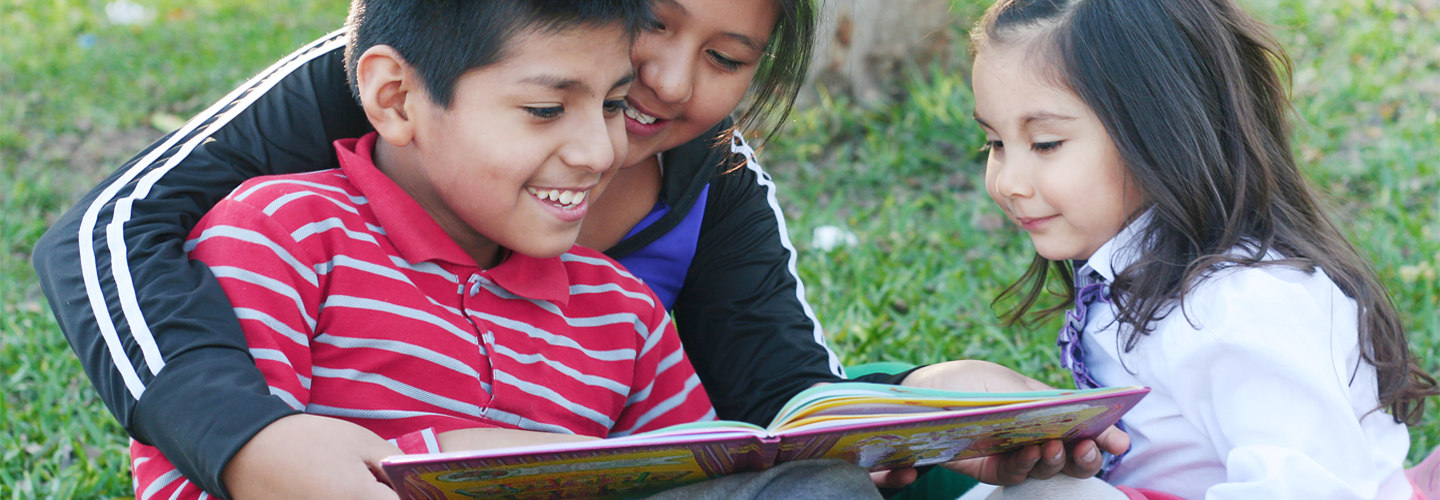
Why should you use storytelling to teach English?
Stories can make us laugh, cry or tremble with fear. They can teach us valuable life lessons and transport us to other worlds. They've been around since the beginning of language itself, but can they actually help us learn a language?
Stories are one of the most useful tools when teaching children English. Not only do they help with listening and reading skills, but they can also support speaking and writing skills by providing context, language and structure.
Very young learners may already be familiar with stories – they may hear them in daycare, school or at home with their parents. Therefore, incorporating these into their language classes may help them to feel more comfortable in their surroundings. And if children feel comfortable, they are more likely to be receptive to learning.
Storytelling usually happens as part of a group in the classroom. This means that it becomes a bonding activity for children where they can communicate and subconsciously pick up the key language. While having fun listening and interacting with the story, they soak up information without even realizing they’re learning.
So, what storytelling activities can we use with young learners? Let’s find out.
Practical activities for storytelling with young learners
Often, we think of storytelling simply as reading a book aloud to children. Yet, there are other activities you can do. These include:
1. Choral repetition
To get young children interacting with the story, first read out a sentence alone. Then, have the children repeat the line with you as a group. Repeat as many times as necessary, until the children feel confident with the language.
2. Individual repetition
If your learners are happy to, ask them individually to repeat the sentence after you. Make sure each one has a turn and praise them for being brave and trying to use the language.
3. Play acting
An activity that works well with children is to act out the story’s characters. For example, there may be animals, fairies, monsters or other exciting characters that they can each act.
Ask them to make the noises of the animals, the wind, or the scenery to create an atmosphere while you read. This gets them interacting with the story and the rest of the group, which will help their communication and listening comprehension skills.
4. Use puppets or dolls
Young learners react particularly well to visual aids and realia. Why not use puppets or dolls to act out the characters, or even ask students to have a go with them? They will engage more with the story and the language.
5. Dive into the pictures
Children’s story books are usually quite visual with illustrations and pictures. Make the most of these while telling the story. Try asking students questions about the images to get them using the vocabulary.
You could ask them, “what can you see?”, “what’s he wearing?” or “can you find an apple?”. This is another great way to reinforce the vocabulary they’re learning in class.
Use these activities individually or incorporate a mix into your lessons. Either way, storytelling will help your learners with more than just developing their English language skills.
Storytelling with adult language learners
While we often think of storytelling as a pastime for children, it can also be a useful language learning activity for adults.
Stories are part of our daily lives, from news to social media to books and movies. Therefore, they can be extremely beneficial tools for English language learning.
Yet, the way we approach storytelling as a class activity for adults differs to that of young learners. While we typically read fairy tales to young children, we can bring in a much wider range of content for adults, such as:
- News stories – There may be a current news story that learners are interested in. Ask them to bring in an article to retell in class.
- Traditional folk stories – Ask learners what traditional folk tales or ghost stories they were told as children growing up in their hometowns. This can be really interesting for both language and cultural awareness.
- Personal life stories – Our lives are a series of short stories that can make for very interesting reading. You can either ask students to share stories in class orally or have them write up a “chapter” from their lives to tell the class. It could be something funny that happened to them or an anecdote from their childhood, for example.
- Movie plots – Ask students what their favorite movies are and have them either tell the group the summary of the plot or write it up to share at the end of the lesson.
- Advertisements – There are some fantastic advertisements which tell mini stories in under three minutes. Have students choose one, show it to the class and discuss it as a group.
Storytelling can be a wonderful language learning tool for both children and adults. If you’re looking for a new way to engage, inspire and motivate your learners, why not try it in your next class?
